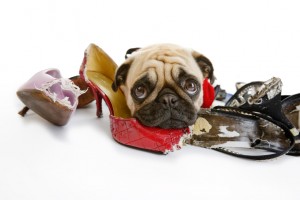10 Exciting Labrador Retriever Facts You Don’t Want To Miss!
We collected 10 awesome facts about Labrador retrievers that you might find interesting.
P.S. Keep these tips handy for your board by pinning this! Thanks!
We collected 10 awesome facts about Labrador retrievers that you might find interesting.
P.S. Keep these tips handy for your board by pinning this! Thanks!
The Labrador Retriever is known for its fun, smart and friendly nature. They make fantastic family pets, and are great with kids and adults alike. The Labrador Retriever is America’s most popular canine breed
Origins:
The Labrador Retriever was initially bred as a working breed-namely as a helper to fisherman. It helped by fetching ropes, hauling nets and catching fish in the North Atlantic. The Labrador Retriever was originally bred in Newfoundland, off the coast of Canada.
Labradors Today:
P.S. Keep these tips handy for your board by pinning this! Thanks!
Although Labs are no longer solely used for hard labour, they are most likely to be family pets-pampered, loved and wonderful companions. They are still, however, used for work that many other breeds are unable to do. Because of their kind and gentle nature, they are often used as therapy dogs, giving joy to the elderly, the ill, and can be used to assist the handicapped due to their exceptional intelligence.They are even used as search and rescue dogs, as well as assisting in drug and explosive sniffers.Labs are also often used as search and rescue dogs, thanks to their keen nose, strong build and agility. A bit of a fun fact, however, is that the Labrador Retriever is not exactly the best watchdog! Rather than scaring intruders away, this friendly mutt is more likely to welcome intruders in!
Breed Stats:
Lab Facts:
Because Labrador Retrievers were built for physical jobs, they need plenty of exercise. They may be seen as boisterous, taking out pent up energy out in unpleasant ways, including digging, chewing and barking. This can be misunderstood as hyperactivity. In fact, labs need at least 30 minutes of exercise a day-even as much as an hour, to keep them satisfied.
Labradors are known for their love for food. This is why owners need to ensure that they have a high risk of obesity. Make sure your lab gets plenty of exercise, and never overfeed with treats. Rather limit to measured regular meals . In fact, labs are so full of quirks that they will go as far as foraging through bins, dirty diapers, and other inedible foodstuffs.
Health Problems:
While Labs are overall healthy and strong dogs, like all dogs they do experience health problems. While your lab may not necessarily experience these problems, here are some problems to look out for.
Other Ailments:
Care:
As mentioned, this loving and social breed needs plenty of love, attention and exercise. Additionally, because of it’s predisposition to obesity, a carefully planned out, healthy diet is vital. When it comes to grooming, labs are pretty low maintenance. However, they do tend to shed a lot, so a vacuum cleaner and a quick brush daily is a good idea.
Labs only really need to be bathed about once every two months, unless of course they roll around in something unpleasant.
Brush your Labs teeth twice a week to avoid buildup of tartar and bacteria.
The Bottom Line
It is no wonder that the Labrador Retriever is America’s most loved breed. They are intelligent, energetic, hard workers and beautiful companions. Are you a Lab lover? Leave a comment and tell us all about it!
Black Friday Blow Out Deals! Save up to 65% on Deep Discounted Items at onlynaturalpet.com!
It is normal for dogs to whine at some point or another. Dogs often whine when they need to go out, and sometimes dogs whine when they are trying to tell their owners something. In some cases, however, dogs may begin to whine excessively, and it can be a difficult behavior to deal with.
The Details
P.S. Keep these tips handy for your board by pinning this! Thanks!
The Bottom Line
Excessive whining is just like any behavior ¾ you can condition your dog not to do it. Rather than punishing your dog for whining, you should try to reward him for being quiet. If you are consistent in not reinforcing the negative behavior and in rewarding good behaviors, you can easily control your dog’s whining.

Chewing is a natural and appropriate behaviour for dogs, and is a natural part of a puppies learning experience. Young dogs learn about new things and the world around them by smelling things and putting them in their mouths. When young dogs go through teething – chewing provides a great relief during the itching period. Although chewing is a natural behaviour for dogs there are a couple of things you can do to keep your dog from wreaking havoc on your closets, tearing apart clothes and gnawing on your shoes.
The Details
P.S. Keep these tips handy for your board by pinning this! Thanks!
We Recommend This Hoopit Squeaky Dog Toy From Plushgoggies For Hours Of Chewing Fun For Your Dog
The Bottom Line
Give your dog plenty of exercise. Even small dogs require daily exercise to stretch their legs and to work off excess energy. If your dog doesn’t get enough exercise during the day, he is more likely to chew on things.
 While chewing is a natural behavior for dogs, that doesn’t mean you have to put up with your dog destroying your shoes and wrecking your furniture. Rather than trying to stop your dog’s chewing behavior altogether, try redirecting it to more appropriate outlets, such as chew toys.
While chewing is a natural behavior for dogs, that doesn’t mean you have to put up with your dog destroying your shoes and wrecking your furniture. Rather than trying to stop your dog’s chewing behavior altogether, try redirecting it to more appropriate outlets, such as chew toys.
Remember, the key to success in any form of dog training is to be calm and consistent. Do not be lenient on your dog, but do not punish him either, Simply reward him for good behavior, and he will learn quickly.